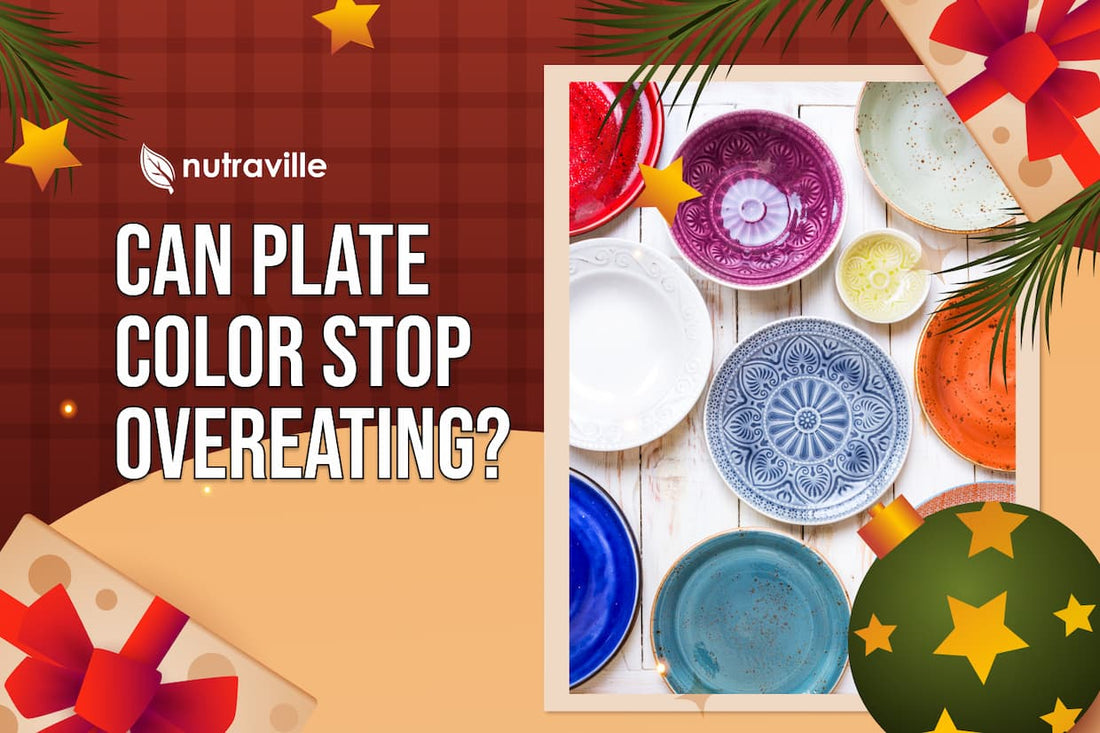Can Plate Color Stop Overeating?

You’re at a restaurant, and the waiter places a steaming plate of pasta in front of you. The aroma is mouthwatering, but something unusual catches your eye. It’s served on a vibrant red plate.
Does it make you want to dive in or pause for a moment?
As it turns out, that plate might be doing more than just making your dish Instagram-worthy.
Studies suggest that the color red can subtly influence how much you eat and not in the way you’d expect.
Red plates, combined with smaller sizes, might just be the simplest hack to control portions and curb overeating without even trying.
But why am I sharing this with you?
Because let’s face it, many of us struggle with portion control. Whether it’s sneaky late-night snacks or overloading our plates at dinner, it’s easy to feel like we’re fighting a losing battle with willpower.
What if the solution wasn’t about self-discipline but changing something as simple as your plate?
If this sounds too good to be true, stick with me.
Let’s dive into the fascinating science behind it and how you can use it to your advantage at your next meal.
Red Plates: The Science of Eating Less Without Noticing

Red is no ordinary color when it comes to your brain.
It’s the universal signal for danger, caution, and urgency… stop signs, warning lights, and even your teacher’s red-ink corrections all reinforce this.
So, when you see red, your subconscious often reacts with a sense of restraint or pause.
Studies reveal this effect carries over to your dinner plate. Research has found that people served meals on red plates tend to eat less than those on white or blue plates.
The reason?
Red triggers what psychologists call “avoidance motivation.” Essentially, your brain nudges you to slow down, eat mindfully, and, in many cases, stop before you overdo it—especially with indulgent foods.
The Contrast Effect: Why Color and Portions Go Hand in Hand
But there’s a catch,
It’s not just about red plates. The way your food contrasts with the plate matters, too.
High contrast—think green veggies or golden pasta on a red plate—creates a visual cue highlighting portion size. Your brain perceives the food as more, making you feel satisfied faster.
On the flip side, low-contrast pairings, like red pasta on a red plate, can make portions harder to gauge. This phenomenon, often called “calorie camouflage,” can lead to overeating without you even realizing it.
Pretty fascinating, isn’t it?
Plate Size: A Game Changer in Portion Perception

Now imagine combining the psychological power of red plates with smaller dish sizes.
The Delboeuf illusion—a fancy name for a simple visual trick—shows that the same portion of food looks larger on a smaller plate. This means you’re more likely to feel full with less food, as your brain interprets the serving as more abundant.
Pair this with a red plate, and you’ll increase the odds of mindful, controlled eating without feeling deprived.
And don’t forget utensils.
Studies show that smaller forks or spoons encourage smaller bites, naturally slowing your eating pace and giving your brain time to catch up with your stomach’s fullness signals.
This isn’t just a quirky trick. It’s a game-changer in a world of super-sized portions and fast-paced meals.
By making subtle adjustments to your plate color, size, and utensils, you can reframe your approach to food.
- No willpower required: The environment does the work for you.
- No restriction: You’re not cutting out foods you love, just eating them in smarter ways.
- Sustainable and simple: It’s a tweak you can stick to, no matter your lifestyle.
Ready to try it?
Here’s how to test this out at home:
- Swap out your regular dinnerware for smaller, red plates.
- Serve meals with high-contrast foods to make portions visually satisfying.
- Pair your new plates with smaller utensils to slow down your eating pace.
And if you’re dining out? Pay attention to the plates on which your food comes. Does the color or size change how much you eat?
The Takeaway
The humble plate might seem insignificant, but it holds surprising power over how much you eat.
By choosing red plates and downsizing your dinnerware, you can take control of your portions without relying on willpower or complex dieting strategies.
So, what’s stopping you? Give it a try. And when you do, let me know how it works for you. Does your red plate become your secret weapon for eating mindfully? Share your experience by replying to me. I’d love to hear your thoughts.




